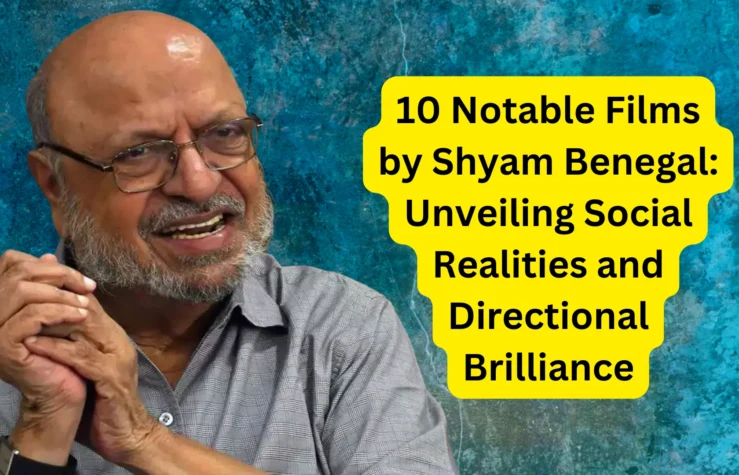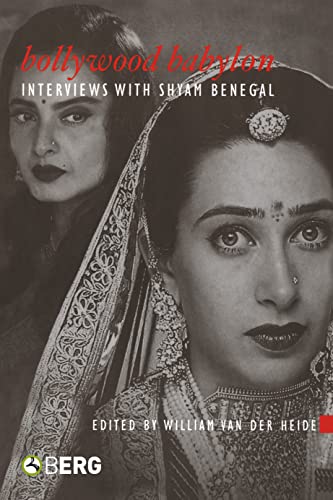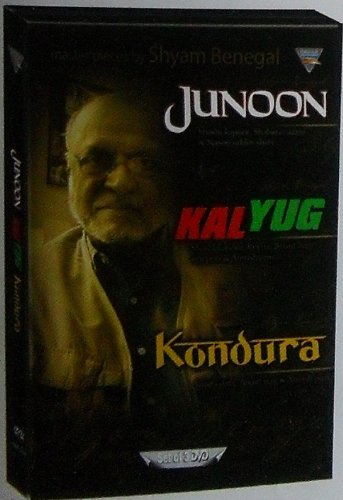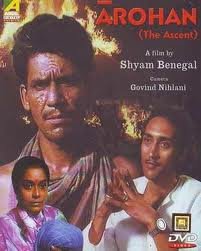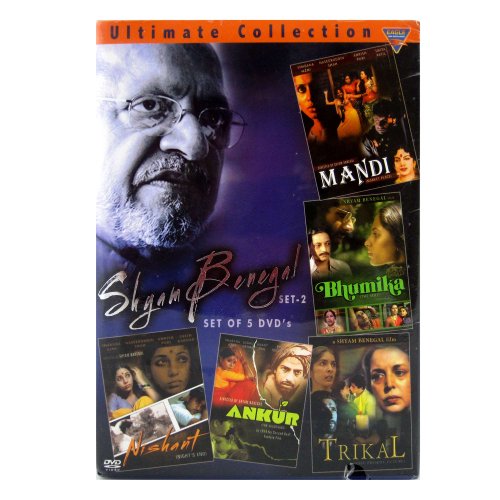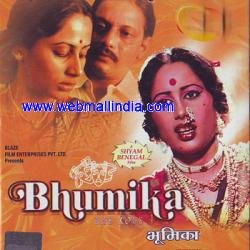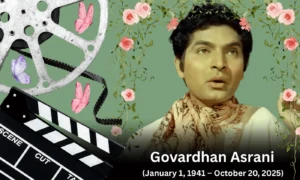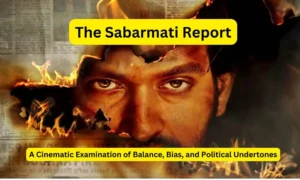Introduction
Being a trailblazer of the parallel cinema movement, Shyam Benegal is a legendary figure in Indian cinema. His recent passing on December 23, 2024, at the age of 90, signifies not only the loss of a remarkable filmmaker but also the end of an era in Indian filmmaking that prioritized social realism and artistic integrity. Benegal’s films have consistently challenged societal norms and provided a platform for critical discourse on pressing social issues, making him a revered icon in the industry.
Overview of Benegal’s Filmmaking Style
Benegal’s filmmaking is characterized by its deep engagement with social themes, including gender inequality, caste discrimination, and the complexities of human relationships. His narratives often delve into the intricacies of Indian society, reflecting the struggles and aspirations of marginalized communities. This commitment to realism distinguishes his work from mainstream cinema, which frequently prioritizes commercial viability over substantive storytelling.
A hallmark of Benegal’s style is his focus on character-driven narratives. He believed that films should resonate with audiences on a personal level, allowing viewers to connect with the characters’ journeys. This approach is evident in films like Ankur and Mammo, where the protagonists navigate their realities amidst societal constraints. By portraying authentic human experiences, Benegal invites audiences to reflect on their own lives and the world around them.
Moreover, his storytelling is marked by a realistic portrayal of societal issues. Rather than shying away from uncomfortable truths, Benegal’s films confront them head-on. For instance, Nishant explores feudal oppression and its impact on individual lives, while Manthan addresses the cooperative movement and rural empowerment. Through these narratives, he not only entertains but also educates viewers about critical social dynamics.Benegal’s ability to weave together compelling stories with profound social commentary has solidified his reputation as a master storyteller.
His works serve as a mirror to society, reflecting its complexities and contradictions while advocating for change. As we remember Shyam Benegal, it is essential to acknowledge his contributions to Indian cinema and the lasting legacy he leaves behind—a legacy that continues to inspire filmmakers and audiences alike in their pursuit of meaningful storytelling.
Notable Works of Shyam Benegal
Shyam Benegal’s remarkable contributions to Indian cinema are best exemplified by his early works, which laid the foundation for a new wave of socially conscious filmmaking. Through films like Ankur (1974) and Nishant (1975), Benegal showcased his distinctive style, which blended social realism with compelling storytelling. These films not only explored complex societal issues but also helped in shaping the careers of several prominent actors and actresses.
Ankur (1974)
Plot and Themes
Ankur was a groundbreaking film that explored the realities of rural India, particularly focusing on issues of caste, feudalism, and the power dynamics in agrarian societies. Set in a village, the film tells the story of a young man, Shankar, who is drawn into a conflict between the oppressive landowners and the subjugated peasants. The film delves into the complexities of social structures, highlighting how power, control, and exploitation manifest in rural India. At its core, Ankur is an exploration of the human struggle against systemic injustice.
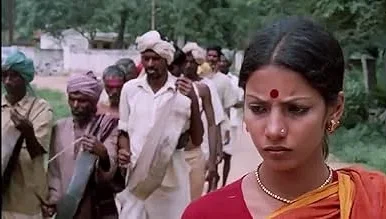
Benegal’s portrayal of the rural landscape is subtle yet powerful, and his ability to depict the emotional and psychological toll of feudalism on individuals makes Ankur not just a social commentary but also a poignant human drama. The film also raises questions about the intersection of personal ambition and social responsibility, offering a nuanced perspective on the realities of rural life.
Significance in Launching Shabana Azmi’s Career
One of the most significant aspects of Ankur was the introduction of Shabana Azmi, who played the role of the young, oppressed woman, Lakshmi. The start of her remarkable career in Indian cinema was marked by her highly acclaimed performance. As one of the most gifted and significant actors in Indian cinema, Azmi’s portrayal of a woman confined by her circumstances but resolved to exercise her own agency struck a profound chord with both viewers and critics. The film’s success in launching Azmi’s career cannot be overstated, as it set the stage for her future collaborations with Benegal and other notable filmmakers.
Critical Acclaim
Ankur was widely praised for its realistic portrayal of rural India, its attention to detail, and its engaging narrative. The film marked a significant shift away from the melodramatic tendencies of mainstream cinema, offering a stark and unsentimental view of societal issues. Critics hailed Benegal’s direction for its mature handling of sensitive topics, and the film went on to receive critical acclaim both domestically and internationally. Ankur established Benegal as one of India’s foremost filmmakers, recognized for his ability to tackle complex social issues with depth and empathy.
Nishant (1975)
Exploration of Feudal Oppression and Societal Norms
Nishant (1975), another landmark film in Benegal’s career, takes a hard look at the oppressive feudal system that existed in rural India. Set in a fictional village, the film explores themes of power, violence, and gender inequality. It tells the story of a schoolteacher, played by Naseeruddin Shah, who witnesses the brutalities of a feudal lord and his entourage as they dominate the lives of the villagers.
The narrative unfolds as the schoolteacher, along with other characters, confronts the stark realities of social and political oppression. Through its sharp critique of the feudal system, Nishant brings to light the deeply entrenched societal norms that governed rural India during the time.
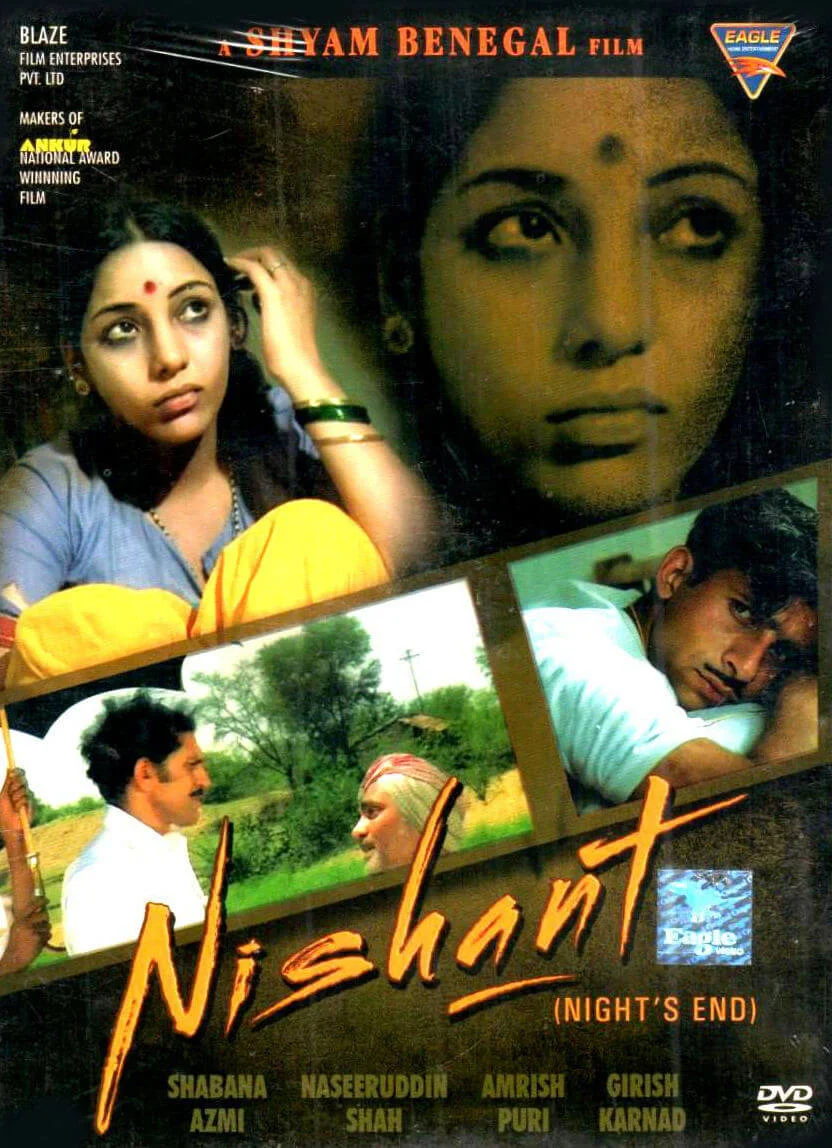
The film’s portrayal of the helplessness of ordinary people in the face of power is gripping, and Benegal’s nuanced direction ensures that the themes of oppression, exploitation, and resistance are explored without romanticizing or oversimplifying the issues at hand. In Nishant, Benegal once again demonstrates his prowess in depicting human beings caught in the gears of an unjust system, while also offering a hopeful view of resistance and the possibility of change.
Recognition as India’s Official Entry to the Oscars
Nishant was not only well-received in India but also garnered international recognition. The film was selected as India’s official entry for the Best Foreign Language Film category at the 1975 Academy Awards, a rare honor that underscored the film’s importance on the global stage. While it did not win the Oscar, the selection of Nishant showcased the growing recognition of Indian parallel cinema in international film circles and helped establish Shyam Benegal as a filmmaker capable of transcending national borders with his storytelling. The film’s international exposure opened doors for Benegal’s subsequent works to be appreciated beyond Indian audiences, further cementing his legacy in world cinema.
Manthan (1976)
Focus on Rural Empowerment and the Dairy Cooperative Movement
Manthan (1976) stands as a groundbreaking film in Shyam Benegal’s career, focusing on rural empowerment and social change through the lens of the dairy cooperative movement. Set in the context of rural India, the film chronicles the efforts of a dedicated cooperative society to improve the lives of farmers and promote economic self-sufficiency.
The narrative revolves around the establishment of a cooperative dairy society and its potential to lift the local farming community out of poverty and exploitation. At the core of Manthan is the belief in the transformative power of collective action and community-driven solutions, portraying how the farmers, despite their initial skepticism, come together to challenge the existing system of oppression and control.
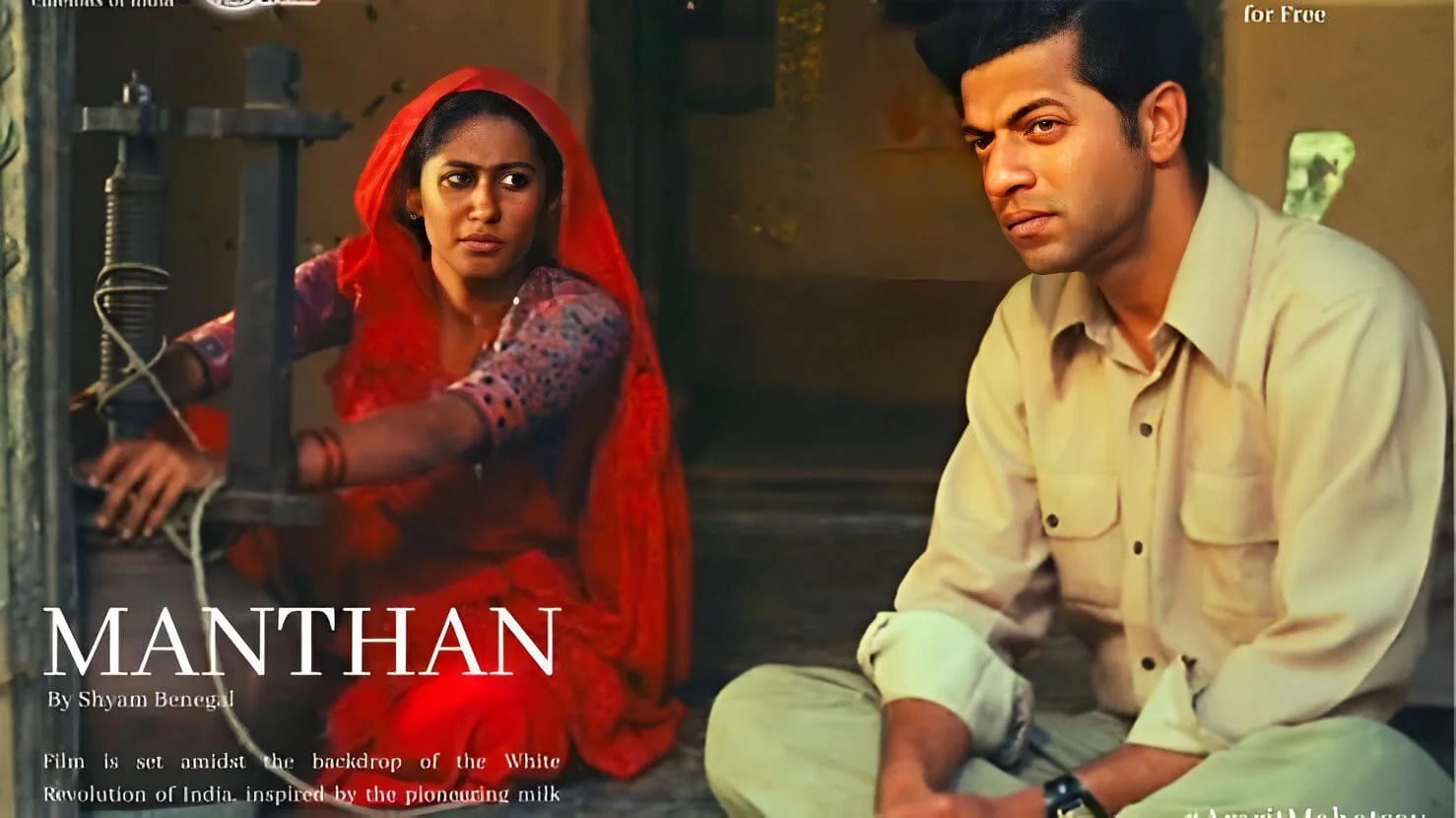
The film highlights the ideological and practical hurdles that the cooperative faces, with particular emphasis on the role of leadership, integrity, and perseverance in bringing about real change. The film also depicts the everyday struggles of rural people, revealing the complex social dynamics that often hinder progress. Benegal’s approach was marked by a realistic and pragmatic portrayal of the challenges faced by the farming community, as well as the hope and optimism the cooperative movement promised.
Impact on the Amul Cooperative and Reception Among Farmers
One of the most significant aspects of Manthan was its direct connection to the real-life Amul cooperative, which played a pivotal role in the dairy cooperative movement in India. The film was inspired by the White Revolution, a movement led by Dr. Verghese Kurien, which transformed India into the world’s largest producer of milk. The success of Amul’s cooperative model of milk production was central to the story in Manthan, making it a highly relevant and timely subject for Benegal’s film.
Manthan had a significant effect on the farmers and the cooperative movement when it was first published. The film resonated deeply with rural audiences, many of whom were directly involved in or affected by the cooperative dairy initiatives that were sweeping across India at the time. The portrayal of cooperative societies as a means of empowering the rural poor and challenging entrenched powers had a lasting impact, inspiring greater participation in such movements and enhancing the credibility of cooperative models. The film’s realistic depiction of the complexities of rural life and the transformative power of collective action was widely appreciated, and it helped to solidify the idea of rural empowerment as a viable path to economic independence.
Bhumika (1977)
Based on the Life of Actress Hansa Wadkar, Exploring Identity and Ambition
Based on the life of renowned Marathi actress Hansa Wadkar, Bhumika (1977) is a profoundly complex and contemplative film whose cinematic journey mirrors larger issues of identity, ambition, and the pursuit of personal satisfaction. The film explores the turbulent inner life of a woman torn between her professional identity as an actress and her personal aspirations. Through Hansa’s story, Benegal delves into the societal pressures faced by women in the entertainment industry, offering a critical look at the exploitation, objectification, and emotional tolls that often accompany fame and success in cinema.

The character of Hansa Wadkar, portrayed brilliantly by Smita Patil, embarks on a journey of self-discovery, grappling with her roles as an actress, wife, and individual. The narrative is marked by her continuous struggle to reconcile her public persona with her private life, and her journey is not just about success in her career but also about reclaiming agency over her own identity. Bhumika was ahead of its time in addressing the emotional and psychological complexities that often go unnoticed in the glamorous world of cinema, shedding light on the personal sacrifices made by women to maintain their public image.
Notable Performances and Critical Recognition
Bhumika remains a landmark film in Indian cinema, both for its critical exploration of women’s roles in society and its outstanding performances, particularly that of Smita Patil. Patil’s portrayal of Hansa Wadkar is a standout, marked by a rare depth of emotion and nuance. Her performance was widely acclaimed for its sensitivity and realism, capturing the internal conflict of a woman caught between her ambitions and the expectations imposed on her by society. The film also features powerful performances by other actors such as Amol Palekar and Naseeruddin Shah, who contribute to the film’s overall exploration of personal and professional dilemmas.
Critics and audiences alike recognized Bhumika as a significant step forward in Indian cinema, especially in the portrayal of women’s complexities on screen. The film was celebrated for its mature narrative, its refusal to indulge in melodrama, and its ability to present a woman’s internal journey as compelling and deserving of attention. It was one of the early films that shifted the focus from glamorous portrayals of women in cinema to more realistic, multifaceted representations, helping to pave the way for more nuanced female characters in the future of Indian cinema.
Benegal’s direction and ability to capture the delicate nuances of a woman’s personal and professional struggles earned him widespread praise, and Bhumika became an important work in the evolution of parallel cinema. It remains an important film in the history of Indian cinema, not only for its bold storytelling but also for its critical social commentary and exploration of themes that were rarely tackled in mainstream films.
Kondura (1978)
Examination of Folklore and Social Commentary
Kondura (1978), directed by Shyam Benegal, is a film that combines elements of folklore with sharp social commentary, set against the backdrop of rural India. The film explores the rich oral traditions and folk stories that have been passed down through generations, highlighting their significance in shaping local cultures and worldviews. Through its narrative, Kondura examines how folklore is intertwined with everyday life, addressing both the mythological and real-world concerns of the people it portrays.
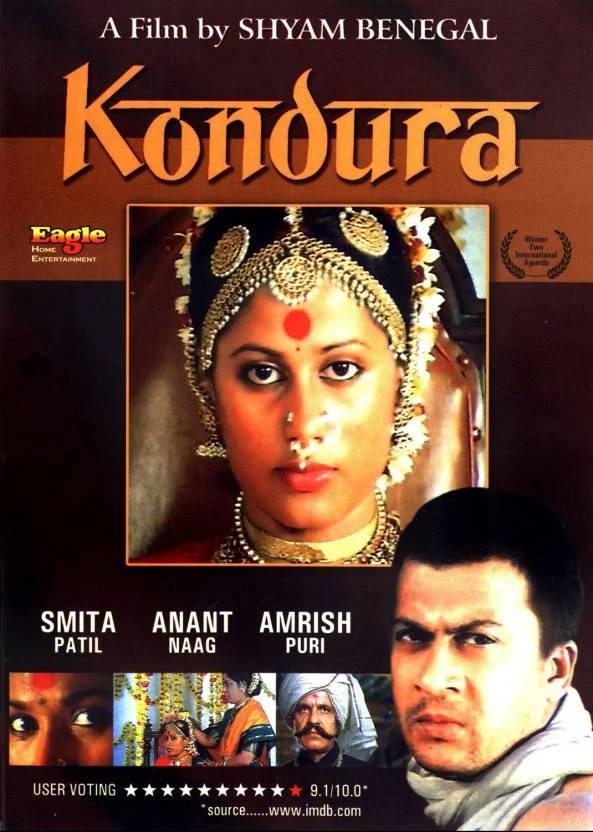
At the heart of the film is the story of Kondura, a mythical figure whose fate is shaped by a series of interconnected events influenced by superstition, tradition, and the harsh realities of rural life. The film critiques the role of these traditional beliefs in constraining individuals, particularly those in the rural working class, by trapping them in cycles of fatalism. As much as it explores the symbolism and narrative of folklore, Kondura also serves as a critique of the ways in which cultural narratives can perpetuate societal injustices, and how they reflect power dynamics that benefit the few at the expense of the many.
Benegal uses folklore not only as a thematic device but also as a tool to explore the larger societal framework, showcasing the friction between progressive thought and traditional ways of life. The examination of myth and reality, along with the questioning of entrenched societal structures, is a recurring theme in Benegal’s work, and Kondura is no exception. The film invites the audience to reflect on how deeply entrenched beliefs shape the social fabric and influence individual actions, often limiting the potential for change and growth.
Unique Narrative Style and Cultural Significance
Kondura is notable for its unique narrative style, which blends the fantastical with the realistic, presenting folklore as a lived experience rather than just a distant cultural artifact. Benegal’s approach in telling the story is both innovative and rooted in the cultural fabric of India. The film does not merely recount the story of Kondura; it immerses the viewer in the world of rural India, where the boundaries between myth and reality are often blurred.
Benegal uses a non-linear storytelling technique, weaving together multiple perspectives and timeframes to create a complex narrative structure. This unique approach helps to underline the film’s central theme—the interplay between mythological narratives and the lived experiences of the people. The film’s cultural significance lies in its ability to provide insight into how folklore continues to shape contemporary rural society, maintaining a delicate balance between preserving cultural traditions and adapting to modern realities.
The film also highlights the intricate connection between the land and the people who inhabit it. By focusing on the lives of ordinary villagers, Kondura emphasizes the importance of local traditions in sustaining the community’s identity while also critiquing the oppressive social structures that these traditions sometimes uphold. In doing so, it sheds light on the challenges of reconciling the past with the present in a rapidly changing world.
Suraj Ka Satvan Ghoda (1992)
Adaptation of Dharmvir Bharati’s Novel, Exploring Interconnected Stories
Suraj Ka Satvan Ghoda (1992) is an adaptation of Dharmvir Bharati’s celebrated Hindi novel, and it marks another milestone in Shyam Benegal’s career as a filmmaker known for his intellectual depth and narrative complexity. The film weaves a tapestry of interconnected stories that explore the lives, ambitions, and moral dilemmas of its central characters. Through these stories, Benegal constructs a narrative that is both intimate and expansive, blending the personal with the universal.
The film is centered around the recounting of a tale by a narrator, whose storytelling binds the different lives and fates of the characters together. Each of these interconnected stories provides a unique perspective on love, loss, identity, and betrayal. The film’s structure, with its multiple perspectives and shifting timelines, allows the audience to experience the richness of the human condition from various viewpoints, showcasing the complexity of emotions and relationships.
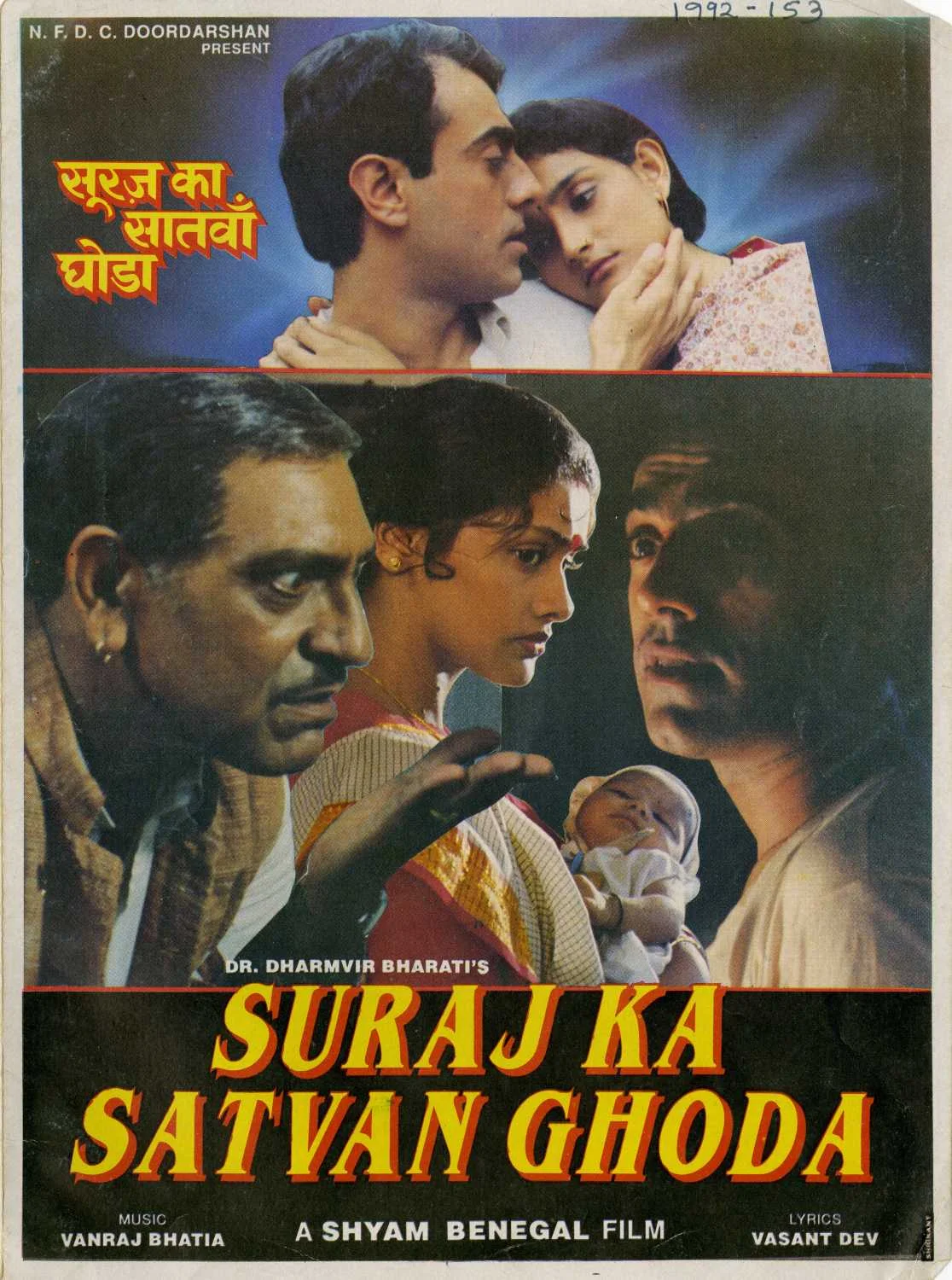
One of the key themes of Suraj Ka Satvan Ghoda is the fluidity of truth and perception. The film challenges the idea of a singular, objective reality, suggesting that truth is often subjective, colored by personal biases and perspectives. By presenting the same events through different eyes, Benegal invites the audience to reflect on the nature of storytelling itself—how narratives are constructed and deconstructed, and how different interpretations of the same story can coexist.
Intellectual Depth and Narrative Innovation
Suraj Ka Satvan Ghoda is a testament to Shyam Benegal’s mastery of intellectual storytelling. The film is not just a collection of stories; it is an exploration of the nature of human experience, framed within the context of social, political, and cultural forces. Benegal’s adaptation of Bharati’s novel retains the novel’s intellectual depth while adding his own directorial flair, creating a cinematic experience that is both thought-provoking and visually compelling.
The film’s narrative innovation lies in its experimental approach to storytelling. Benegal’s decision to present the events from multiple perspectives challenges traditional linear narrative forms, inviting the audience to engage with the material on a deeper, more reflective level. The use of unreliable narration—where the storyteller’s truth is subjective and open to interpretation—adds layers of complexity to the film, making it a rich text for analysis.
Suraj Ka Satvan Ghoda also stands out for its exploration of themes like morality, love, and betrayal. The film critiques societal norms, exploring the moral choices of its characters and how these decisions shape their destinies. The characters are not merely figures in a story; they are representations of broader human experiences, making the film relatable and universal in its appeal. The intellectual rigor of the narrative and the nuanced performances of the cast further elevate the film, making it a significant work in Benegal’s filmography.
Mammo (1994)
A Poignant Story About a Woman’s Struggles Against Societal Constraints
Mammo (1994), directed by Shyam Benegal, is a deeply emotional and poignant exploration of a woman’s fight for freedom in a society that imposes harsh and often unfair constraints on her. The film centers around the character of Mammo, an elderly woman who faces immense challenges due to her status as a widow and a marginalized member of society. Forced to navigate the complex social dynamics of post-partition India, Mammo becomes a symbol of resilience and determination in the face of adversity.
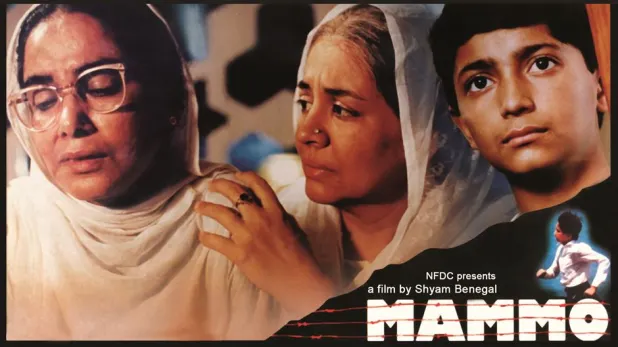
The film highlights Mammo’s struggles to maintain her dignity and independence within a society that expects women, particularly those in her situation, to conform to restrictive social norms. Benegal masterfully captures the harsh realities that women like Mammo must endure, while also portraying her strength and unyielding will to live life on her own terms. Through Mammo’s journey, the film invites viewers to reflect on issues such as gender inequality, societal expectations, and the role of women in a patriarchal society.
Mammo is more than just the story of a woman fighting societal constraints—it is a narrative about self-empowerment, resilience, and the indomitable human spirit. Benegal’s direction is both sensitive and insightful, portraying the complexities of the character and the social backdrop against which she struggles. The film serves as a powerful critique of the societal norms that continue to limit women’s autonomy, making it an important work in the context of Indian cinema.
Emotional Depth and Strong Performances
One of the key strengths of Mammo lies in its emotional depth, which resonates with audiences on a personal level. The film explores themes of loss, isolation, and the emotional toll of societal prejudice, but it also touches on hope, strength, and the desire for connection. Benegal’s ability to create such a nuanced, layered narrative is enhanced by the powerful performances from the cast.
Shabana Azmi, who plays the role of Mammo, delivers a deeply moving and nuanced performance, capturing the complexities of a woman who is both vulnerable and strong. Her portrayal of Mammo is one of quiet strength, marked by moments of profound sorrow and longing, but also of quiet triumph as she refuses to be defeated by her circumstances. The emotional range Azmi brings to the character ensures that Mammo’s story is not only relatable but universally compelling.
The film also benefits from the strong supporting performances, which further elevate its emotional impact. The sense of authenticity that these performances bring to the narrative makes the film feel grounded in reality, enhancing its poignancy and its ability to resonate with audiences. The chemistry between the characters, particularly Mammo’s relationship with her family and the people around her, adds depth to the film, making it not just a social commentary but a deeply personal story of human connection and struggle.
Sardari Begum (1996)
A Complex Portrayal of a Woman Navigating Societal Expectations
Sardari Begum (1996) is another remarkable film by Shyam Benegal that delves into the complexities of a woman’s life in a society that imposes conflicting expectations. The film tells the story of Sardari Begum, a woman who rises from the oppressive constraints of her time to become a well-known singer, only to face a new set of challenges as she seeks to balance her personal desires with societal demands.
The character of Sardari Begum is a representation of the many women who have been forced to navigate the narrow boundaries imposed on them by societal expectations, particularly in the realm of art and ambition. The film traces her journey, not just as an artist, but as a woman constantly in search of her identity. Benegal’s portrayal of Sardari’s complex inner world, her relationships with those around her, and the social pressures that shape her life adds layers of richness to the narrative, making it a significant exploration of female agency, resilience, and self-discovery.
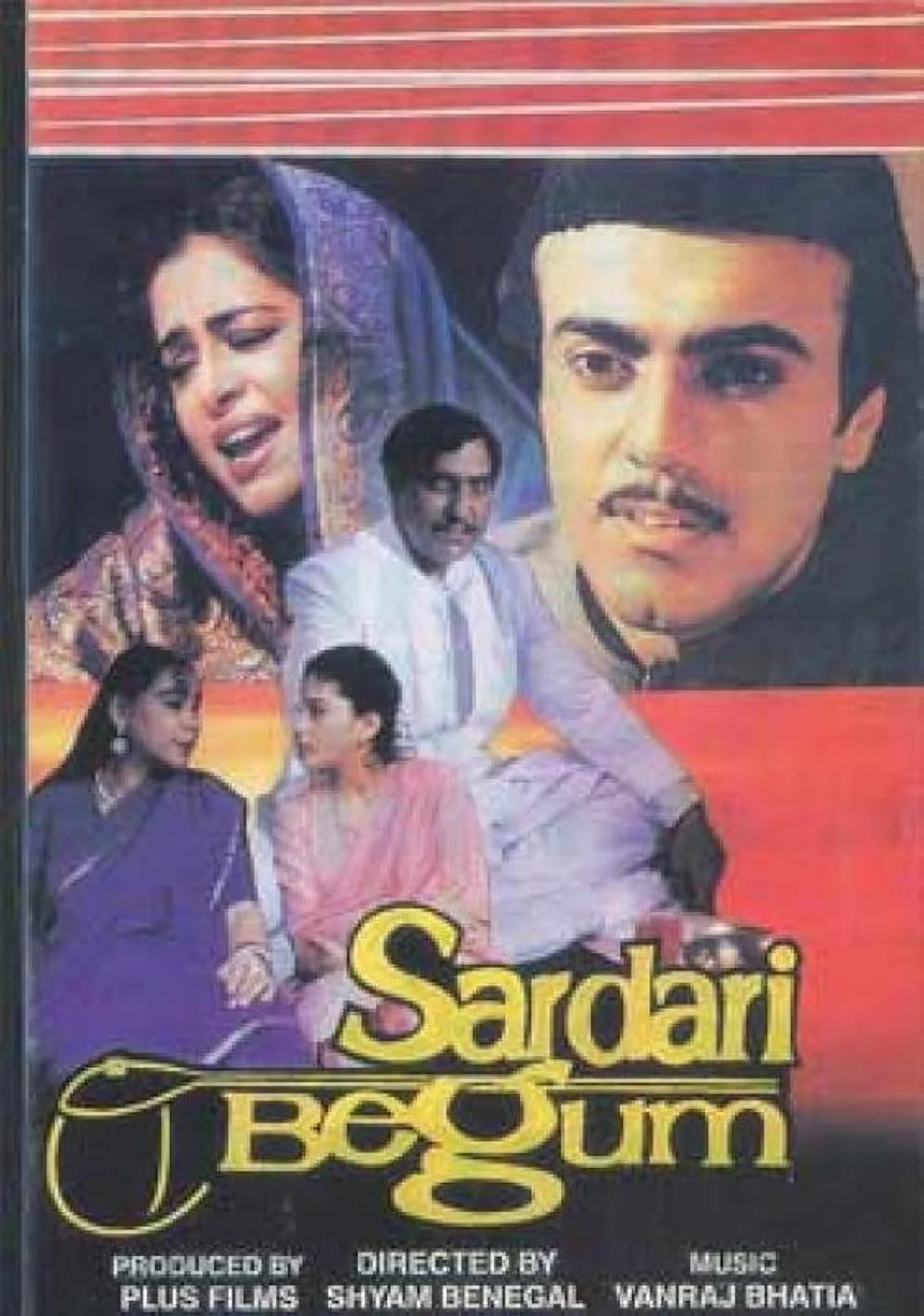
The story of Sardari Begum reflects the struggles of women who aspire for independence and fulfillment in a world that often relegates them to traditional roles. Through her journey, the film brings into focus the gendered expectations placed on women, particularly those in the arts, and the difficulty of balancing personal ambition with the pressures of societal norms. Benegal’s nuanced direction allows the audience to see Sardari not just as a victim of her circumstances but as a woman who fights against those forces in her own unique way.
Exploration of Art, Identity, and Resilience
At its core, Sardari Begum is an exploration of art, identity, and resilience. Sardari’s talent as a singer is a central aspect of the film, yet it also symbolizes the broader struggle for self-expression in a world that demands conformity. The film examines how the pursuit of art and personal fulfillment often conflicts with the demands of societal roles, especially for women.
Benegal uses Sardari’s relationship with her music to delve into the idea of personal identity, showing how the character finds strength and meaning in her art despite the obstacles she faces. Through Sardari’s voice and her performances, the film highlights the emotional and spiritual significance of creative expression. However, Benegal does not idealize the process; rather, he portrays it as a complex, often painful journey, where personal sacrifices are made in the name of art and identity.
Sardari Begum also reflects the idea of resilience in the face of adversity. As Sardari grapples with societal constraints, she does not give up her dream of becoming an artist, despite the personal and professional sacrifices that this journey demands. Her tenacity is evidence of both the transformational potential of art and the durability of the human spirit. In doing so, the film not only critiques societal expectations but also celebrates the capacity of individuals to carve their own path and define their own identity, even in the face of overwhelming odds.
Zubeidaa (2001)
A Tragic Love Story Set Against Societal Pressures
Zubeidaa (2001), directed by Shyam Benegal, is a poignant and tragic love story that explores the complex relationship between individual desires and societal pressures. The film tells the story of Zubeidaa, a woman caught in a web of personal longing, societal expectations, and unfulfilled dreams. Her search for love and independence leads her through tumultuous relationships, each shadowed by the constraints imposed by society.
Set in the backdrop of early 20th-century India, Zubeidaa’s journey is symbolic of the struggles faced by women who dared to challenge the traditional norms of the time. The film delves into Zubeidaa’s emotional turmoil as she tries to find her place in a world that demands conformity, particularly as she experiences the cruelty of societal judgments and patriarchal expectations. Her tragic fate becomes a mirror to the deep societal issues that hinder the personal growth and fulfillment of women, making the film a critical commentary on gender inequality and the complex nature of love and sacrifice.

Benegal’s direction captures the emotional complexity of Zubeidaa’s character, portraying her as a woman torn between love and the overwhelming weight of societal demands. Zubeidaa’s journey is not just one of personal tragedy; it also speaks to a broader social commentary on the constraints that society places on individuals, especially women, who dare to live life on their own terms. Through Zubeidaa’s story, the film evokes a deep empathy for those who suffer under societal norms, while also inviting the audience to reflect on the cost of freedom in a world that often values tradition over individual desire.
Notable for its Soundtrack by A.R. Rahman and Karisma Kapoor’s Performance
One of the standout features of Zubeidaa is its enchanting soundtrack composed by the legendary A.R. Rahman. The music plays a crucial role in elevating the emotional depth of the film, with each track resonating with the themes of love, loss, and yearning that define Zubeidaa’s journey. The haunting melodies and the poignant lyrics of the songs perfectly complement the tragic nature of the narrative, making the film’s soundtrack one of its most memorable aspects. Rahman’s music enhances the mood of the film, capturing the emotional nuances of the characters’ experiences, and bringing a sense of universality to Zubeidaa’s personal story.
In addition to the musical brilliance, the film’s success is also attributed to the powerful performance by Karisma Kapoor, who portrays the titular character of Zubeidaa. Kapoor’s portrayal of Zubeidaa is both vulnerable and resilient, capturing the essence of a woman who navigates love and heartbreak with an unyielding spirit. Her performance was widely appreciated for its emotional depth and complexity, cementing her place as one of India’s most talented actresses. Kapoor’s ability to embody the tragedy of Zubeidaa’s life with such authenticity helped bring the character to life, making the film an enduring piece of cinema.
Trikaal (1985)
Set in Goa, Blending Supernatural Elements with Political Drama
Trikaal (1985), directed by Shyam Benegal, is an intricately woven narrative set in Goa, blending supernatural elements with political drama to offer a rich and textured exploration of history and identity. The film is set against the backdrop of the 1960s, during a time of political change in Goa, which had recently gained independence from Portuguese colonial rule. The narrative unfolds through a family’s history, where personal relationships and the socio-political climate intertwine to reflect the larger historical forces at play.
The film explores the effects of colonial history on the personal lives of individuals and the collective identity of a region. Through the lens of a family’s experiences, Trikaal delves into the generational impact of colonialism, shedding light on how political transitions shape and affect everyday lives. The story is enriched with supernatural elements that blur the line between reality and the ethereal, creating a narrative that is as much about the political tensions of the time as it is about the personal, emotional struggles of the characters. This fusion of political drama with supernatural themes is what gives Trikaal its unique narrative style, providing both a reflective and immersive experience for the audience.
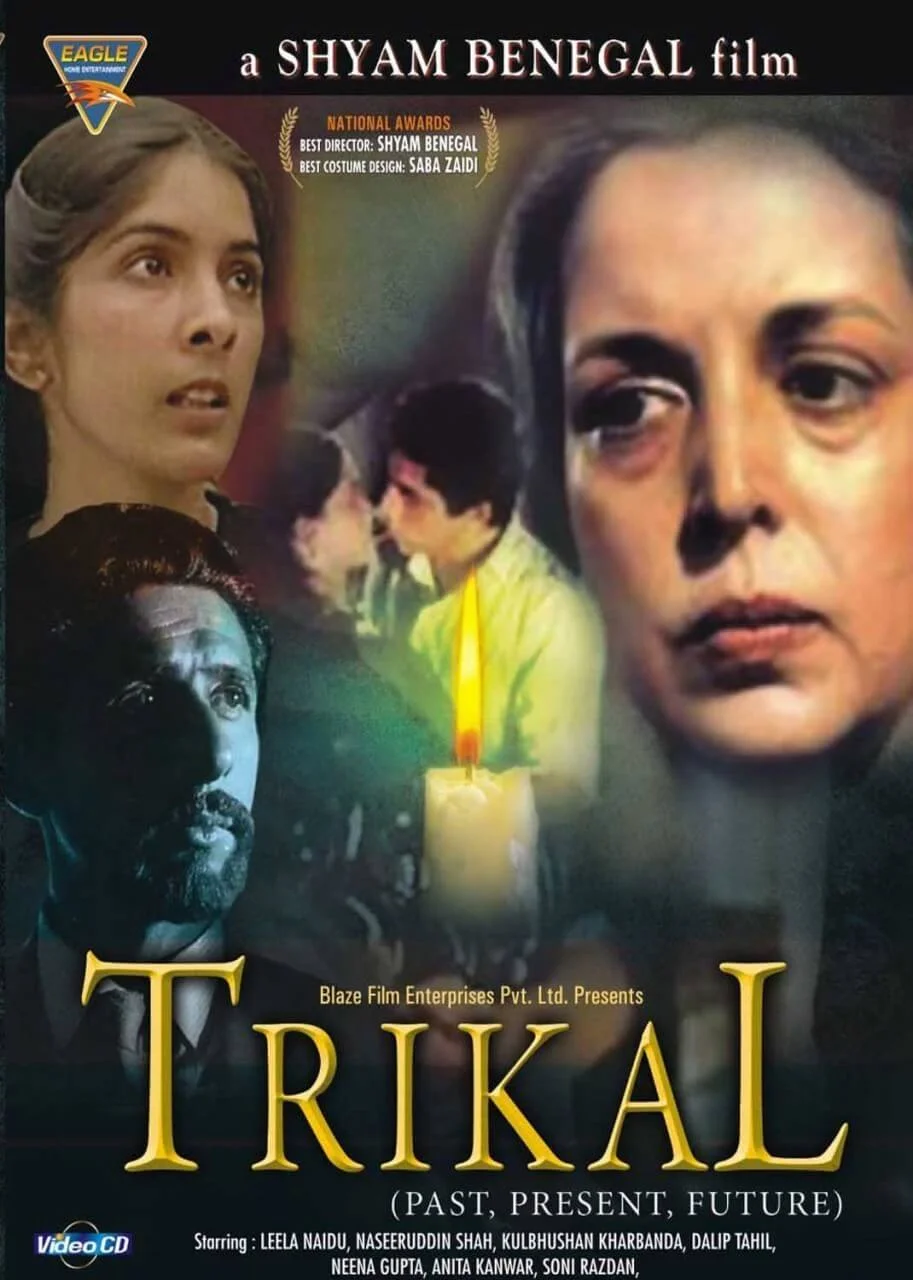
The film’s setting in Goa is also significant, as it provides a nuanced backdrop for exploring issues of identity, belonging, and the legacy of colonialism. Goa’s distinct cultural heritage, shaped by centuries of Portuguese rule, is integral to the narrative, offering a reflective commentary on the challenges the region faced as it navigated its post-colonial identity. In addition to offering a profoundly personal look at the lives of those caught in the waves of change, Trikaal is a film rich in historical background due to its blend of regional customs, colonial relics, and the political unrest that followed independence.
Reflection on Colonial History Through Personal Narratives
At the heart of Trikaal is its exploration of colonial history through personal narratives, which allows Benegal to convey the psychological and emotional impacts of a political system on ordinary lives. The film portrays how individuals, families, and communities are shaped by the colonial structures that once governed their lives, and how they grapple with the consequences long after independence. The personal stories of the characters are intricately tied to the political shifts happening in Goa, highlighting how history is not just experienced by nations but also by individuals, who often find themselves powerless against the larger forces of change.
The film uses the backdrop of family dynamics and personal struggles to create a poignant reflection on the enduring legacy of colonialism, emphasizing how it influences not only political landscapes but also the day-to-day lives and emotional lives of its people. The characters in Trikaal are caught between the past and the present, struggling to reconcile their memories and identities with the new political reality around them. The supernatural elements in the film serve as metaphors for the ghosts of colonial history that continue to haunt the characters, showing how deeply ingrained the legacy of colonialism is in their personal and collective consciousness.
Benegal’s direction in Trikaal is subtle yet powerful, as he captures the tension between the personal and political, the real and the supernatural. Through his storytelling, he offers a complex and multifaceted view of Goa during this transformative period in history, showcasing how the broader political struggles of independence echo in the lives of the people who lived through them.
Awards and Recognition
Overview of the National Film Awards Won by Benegal:
Shyam Benegal’s contributions to Indian cinema have been widely recognized through a multitude of prestigious awards, including multiple National Film Awards. Over the years, his films have garnered acclaim not only for their artistic merit but also for their insightful and socially relevant storytelling. The National Film Awards, India’s most prominent recognition for cinematic excellence, have consistently honored Benegal’s work, underscoring his influential role in shaping Indian cinema. His films, which often delve into complex social issues, have earned him accolades in various categories, including Best Feature Film and Best Direction.
These awards serve as a testament to the impact Benegal’s cinema has had in promoting thought-provoking narratives, especially those that challenge societal norms and conventions. His focus on humanism, social justice, and cultural narratives through cinema has earned him a respected place in the Indian film industry, and the National Film Awards reflect the high regard in which his work is held.
Mention of Other Accolades, Including the Padma Shri and Padma Bhushan
In recognition of his outstanding contributions to Indian cinema, Shyam Benegal has been bestowed with several other prestigious awards, including the Padma Shri (1986) and Padma Bhushan (2005), two of India’s highest civilian honors. The Padma Shri, awarded for his significant contribution to the arts, was an acknowledgment of his work in revolutionizing Indian cinema through the medium of parallel cinema. The Padma Bhushan, awarded nearly two decades later, recognized his enduring influence on the Indian film industry and his role in fostering intellectual engagement with film.
These accolades not only highlight Benegal’s exemplary career but also symbolize his lasting impact on Indian culture. The Padma awards solidify his status as one of the pioneers of Indian cinema, whose work continues to inspire filmmakers and audiences alike.
Legacy and Influence
Discussion on How Benegal Influenced Future Generations of Filmmakers
Shyam Benegal’s influence on future generations of filmmakers cannot be overstated. As one of the key architects of parallel cinema in India, he laid the foundation for a new wave of filmmakers who sought to break away from mainstream Bollywood narratives and explore more nuanced, realistic portrayals of Indian life. With their emphasis on socially conscious subjects, humanistic narrative, and nuanced character analysis, his films encouraged a new generation of filmmakers to see cinema as a potent medium for cultural expression and social change rather than merely as a form of amusement.
Benegal’s style of filmmaking, grounded in realism and authenticity, has resonated with many directors who followed in his footsteps. Filmmakers such as Anurag Kashyap, Rituparno Ghosh, and Deepa Mehta have cited Benegal’s work as an influence, particularly his ability to tackle complex social and political issues through cinematic storytelling. His emphasis on strong narratives, rich cultural contexts, and the exploration of marginalized voices has shaped the way contemporary filmmakers approach storytelling in India.
Benegal’s influence extends beyond the boundaries of Indian cinema. His films, which address themes of identity, politics, and social justice, have found a global audience, fostering a deeper understanding of Indian society and its challenges. By breaking away from the conventional formulas of mainstream cinema, Benegal paved the way for global recognition of Indian cinema’s diverse and compelling storytelling.
Reflection on His Role in Shaping Indian Cinema’s Narrative Landscape
Shyam Benegal played a critical role in reshaping the narrative landscape of Indian cinema. Before Benegal, mainstream Hindi cinema was often dominated by escapist themes and larger-than-life portrayals of romance and heroism. However, with the rise of parallel cinema, Benegal introduced a shift towards realistic and socially conscious narratives, often addressing issues that were previously overlooked or considered taboo.
Through films like Ankur, Manthan, and Nishant, Benegal demonstrated that cinema could serve as a vehicle for social commentary, offering profound reflections on issues such as feudalism, gender inequality, and political oppression. His films placed a spotlight on the realities of everyday life, especially the struggles of ordinary people, and gave voice to marginalized groups. This approach marked a significant departure from the glitzy, formula-driven films of the time, and it opened the door for films that were not just entertaining but also intellectually engaging.
Benegal’s storytelling was rooted in the belief that cinema could both entertain and educate, fostering empathy and social awareness. His ability to engage with India’s political and social fabric while creating universally resonant stories has made his work timeless. The narratives he crafted have left an indelible mark on the way Indian cinema approaches storytelling, with a focus on character depth, social themes, and historical context.
Conclusion
Shyam Benegal’s contributions to Indian cinema are monumental. As a pioneer of parallel cinema, he brought a new level of depth and complexity to Indian filmmaking, exploring issues of social relevance and providing a platform for the voices of the marginalized. His films have not only been critical successes but have also redefined the way Indian cinema is perceived, both domestically and internationally. Through his work, Benegal proved that cinema could be a powerful tool for social change, while also engaging audiences in meaningful and intellectually stimulating ways.
His remarkable achievements as a director, producer, and storyteller have earned him recognition both in India and globally. Benegal’s films, rich in cultural and social nuances, continue to serve as references for aspiring filmmakers who wish to engage with the medium in a more thought-provoking and impactful manner.
Shyam Benegal’s legacy in the Indian film industry is enduring and influential. His work continues to inspire filmmakers, actors, and cinephiles around the world. By challenging the norms of mainstream cinema and focusing on stories that reflected the true complexities of Indian society, Benegal has solidified his place as one of the most important filmmakers in the history of Indian cinema.
As a mentor to many of the country’s most prominent actors and directors, his impact extends beyond his films, shaping the future of Indian cinema. Benegal’s influence will continue to be felt for generations to come, ensuring that his stories, ideas, and cinematic vision remain an integral part of the Indian film industry’s evolution.
His passing leaves a void in the Indian film world, but his contributions to cinema will forever be remembered, cherished, and studied as a vital part of the cultural and cinematic landscape of India. Shyam Benegal’s legacy is not just about the films he made but also about the ideals he stood for – an unwavering commitment to truth, realism, and social change through the lens of cinema.

